Kids provided 75% of the energy for our 3-day festival stage at Maker Faire. How? Lots of bikes.
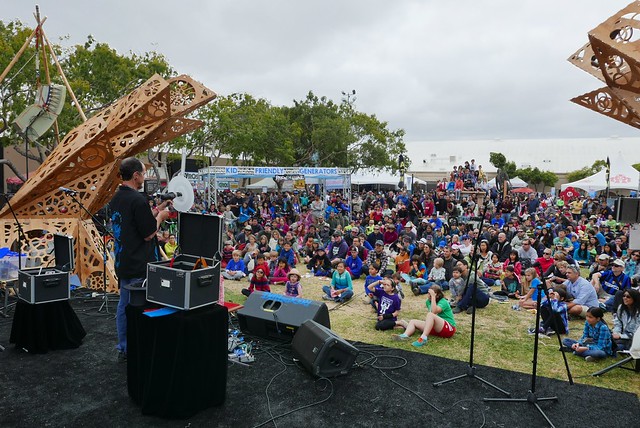
Maker Faire is very family oriented. The largest audience of the weekend was for Magician Bryan Patrick, whose sound needs were ironically minimal.
Since our earliest moments of Pedal Powered experimentation, I’ve been fascinated by how much sound comes from one pedaler’s efforts. I remember a 12-year-old powering my street performance at a charity bike event for an audience of 30-50 people in the early goings. He was into it! Not too hard, not too easy. Great sound out to about 20 feet from the speaker. The ratio of 1 pedaler for every 50-100 people at our events has roughly held as we’ve scaled up Rock The Bike’s full system to do larger events. At the Maker Faire in San Mateo this year, we brought an 18-bike system capable of entertaining over 1000 people, and at most times it was primarily powered by kids.
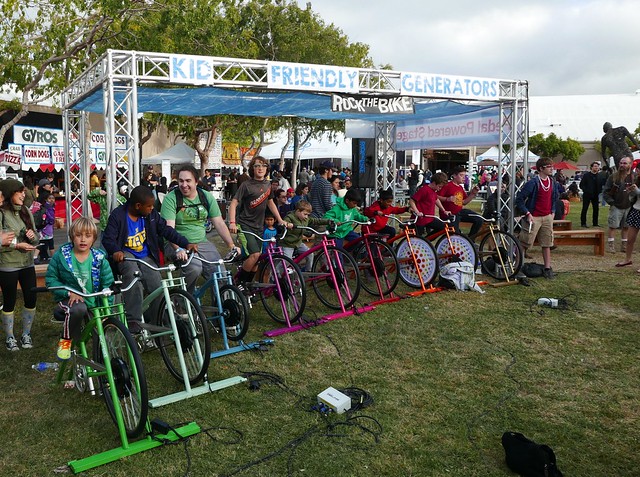
When working with family-friendly events like Maker Faire, we need to bring LOTS of bikes. The basic reason is that Kids Love To Pedal, but don’t have lots of power to offer. If you bring too few bikes, you end up needing to kick kids off, which feels bad. If you bring LOTS of bikes, more kids can pedal. We had a line of 10 kid-friendly Generator Pros on one side of the stage and another line of 8 bikes on the other side.

Maker Faire was our first use of the Russian Dolls Sound System (shown hanging from bamboo tripods) in conjunction with a center fill main. The Russian Dolls system is an elevated system which stands about 10 feet to the left and right of the stage. A center fill is used to get great sound to the front rows without blasting the main audience.
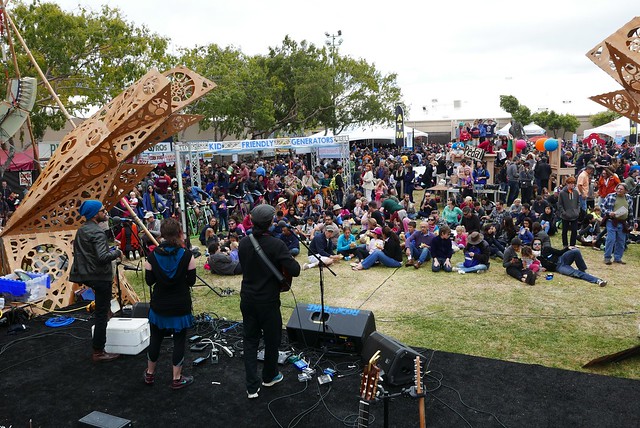 Our mixer has a L, R, and M (mono) outputs. The M output is typically unused, but this time we used it for the center fill speaker (shown above with blue Rock The Bike stencil). Big improvement in listening quality in the main audience area.
Our mixer has a L, R, and M (mono) outputs. The M output is typically unused, but this time we used it for the center fill speaker (shown above with blue Rock The Bike stencil). Big improvement in listening quality in the main audience area.
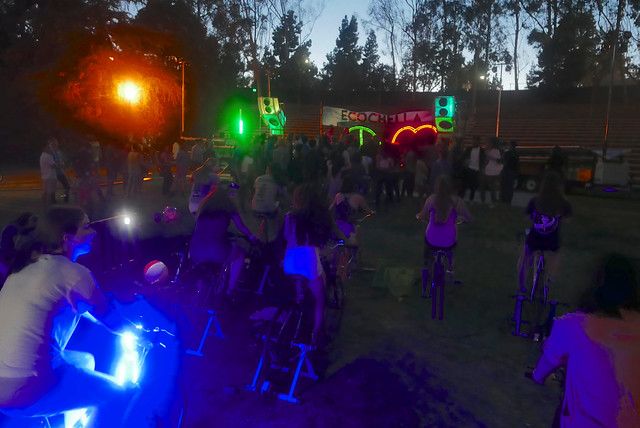
Russian Dolls Sound System includes integrated smart LEDs capable of responding to the music.
These same speakers are also ready for night time use with beautiful integrated smart LEDs capable of responding to changes in the music on stage. Shown above in use at UCLA’s Ecochella earlier this year.
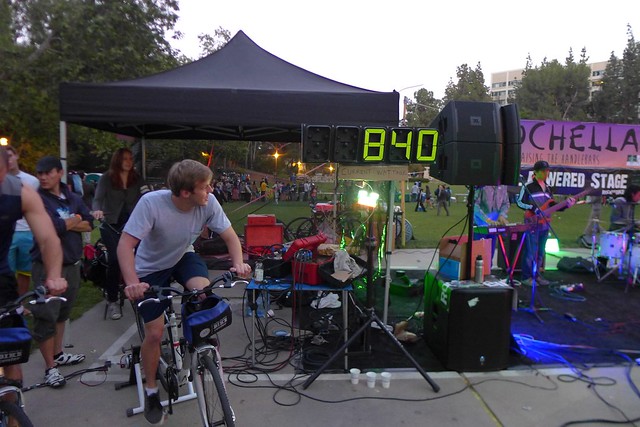
The Faire was our first time passing the 10000 Watt Hour barrier on our Energy ‘Flip-0-meter’ sign. Sadly it malfunctioned by reseting to 1000 after the big ‘9999’ moment, but I kept track and found that for the weekend-long Faire, we pedaled over 15000 Watt-Hours of energy.


